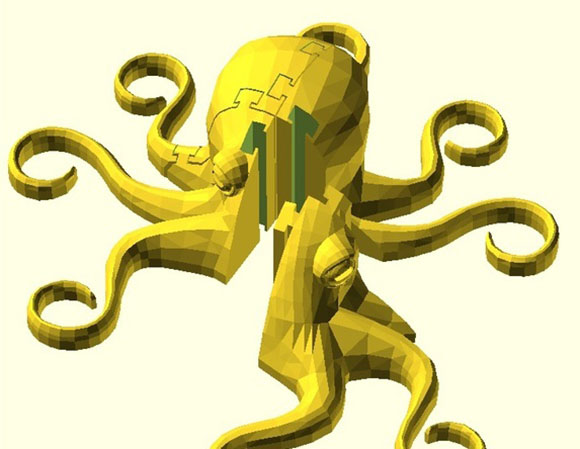
A decade or so ago, a line of jigsaw puzzles called Puzz3D brought the joys of fitting pieces of cardboard together into three dimensions. If you’ve ever put one together, you’ll remember being slightly disappointed at these 3D puzzles – they were made of two-dimensional foam board and only lived up to their expectations on the vertices of their 3D objects. Now that just about every hackerspace in the land has a 3D printer, it might just be time to create better 3D puzzles, and [Rich Olson]’s OpenSCAD library is up to the task.
There are a few other tools that cut 3D models up into smaller objects, but none of these had the features [Rich] wanted. He created a library that is able to position the puzzle cuts anywhere on the X and Y axes, adjusts the kerf for a tighter or looser fit, and exports one piece at a time for 3D printers with a smaller build area.
Right now the library is limited to generating up to four interlocking pieces, but [Rich] says the code should be easy to modify for a truly absurd 500-piece puzzle of the Taj Mahal,















Not sure I’ve ever seen puzz3d brand stuff, but my Voltron cardboard puzzle from the 80s assembled into a flat picture on one side and a 3D Voltron just as big as the plastic toy version if you flipped it over. That was the greatest jigsaw puzzle I’ve ever done. It’d take a lot for a 3d plastic puzzle to top that.
(Oh, here it is!)
http://gfx.cs.princeton.edu/pubs/Luo_2012_CPM/index.php
3D printing technology is rapidly maturing and becoming ubiquitous. One of the remaining obstacles to wide-scale adoption is that the object to be printed must fit into the working volume of the 3D printer. We propose a framework, called Chopper, to decompose a large 3D object into smaller parts so that each part fits into the printing volume. These parts can then be assembled to form the original object. We formulate a number of desirable criteria for the partition, including assemblability, having few components, unobtrusiveness of the seams, and structural soundness. Chopper optimizes these criteria and generates a partition either automatically or with user guidance. Our prototype outputs the final decomposed parts with customized connectors on the interfaces. We demonstrate the effectiveness of Chopper on a variety of non-trivial real-world objects.
Can this Chopper software be downloaded anywhere?
Not that I know of.
http://www.thingiverse.com/thing:35834
it can only be used for openscad
At Ultimaker we just think that we need to build a bigger printer… http://www.kamermaker.com/
Way back in the late 60’s / early 70’s there were… puzzle toys. Multi-colored bits of plastic, a lot like the wooden block puzzles that still survive. When assembled, these looked like [from memory] cars, or film cameras, or such like.
Sorry if this sounds vague, but it was over 40 years ago and I never actually OWNED one.